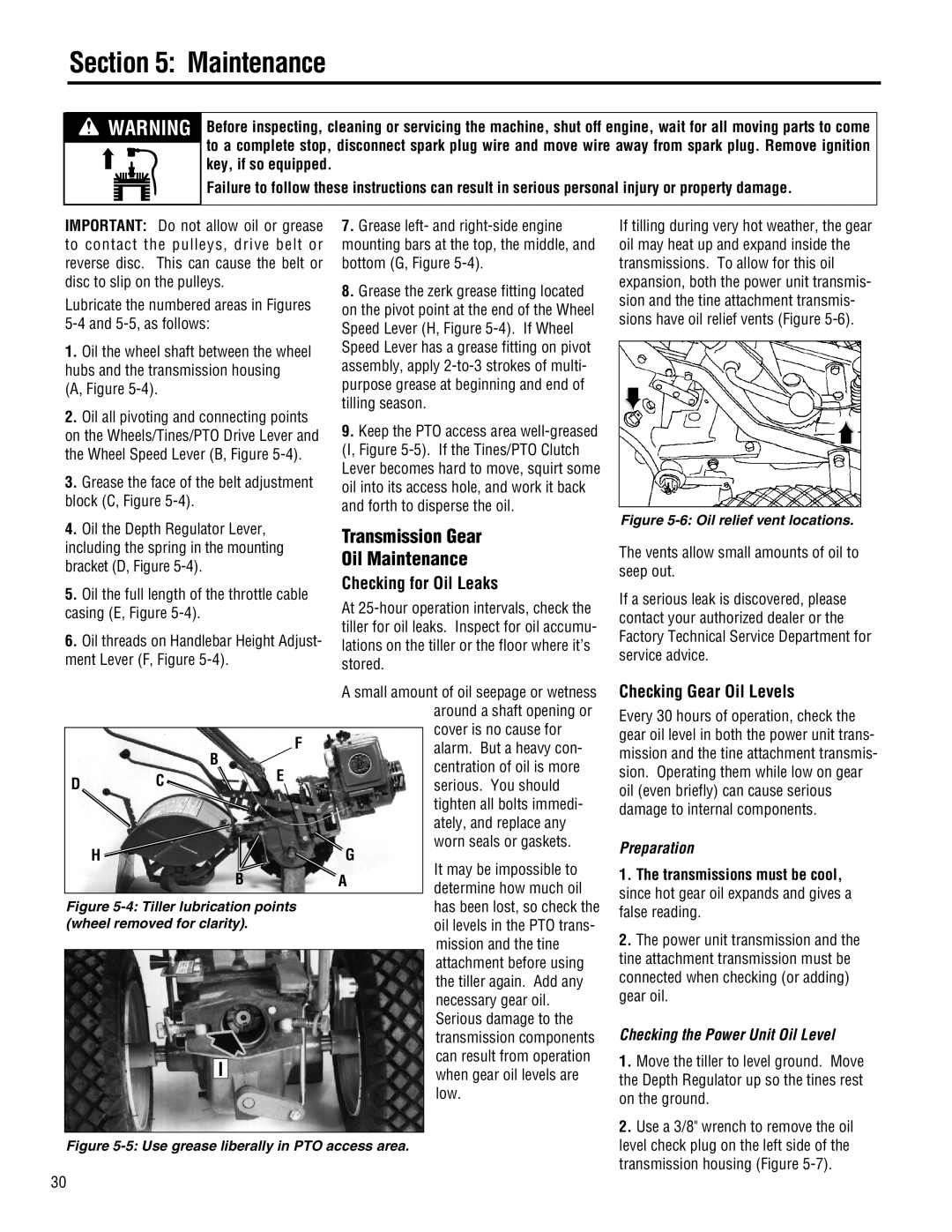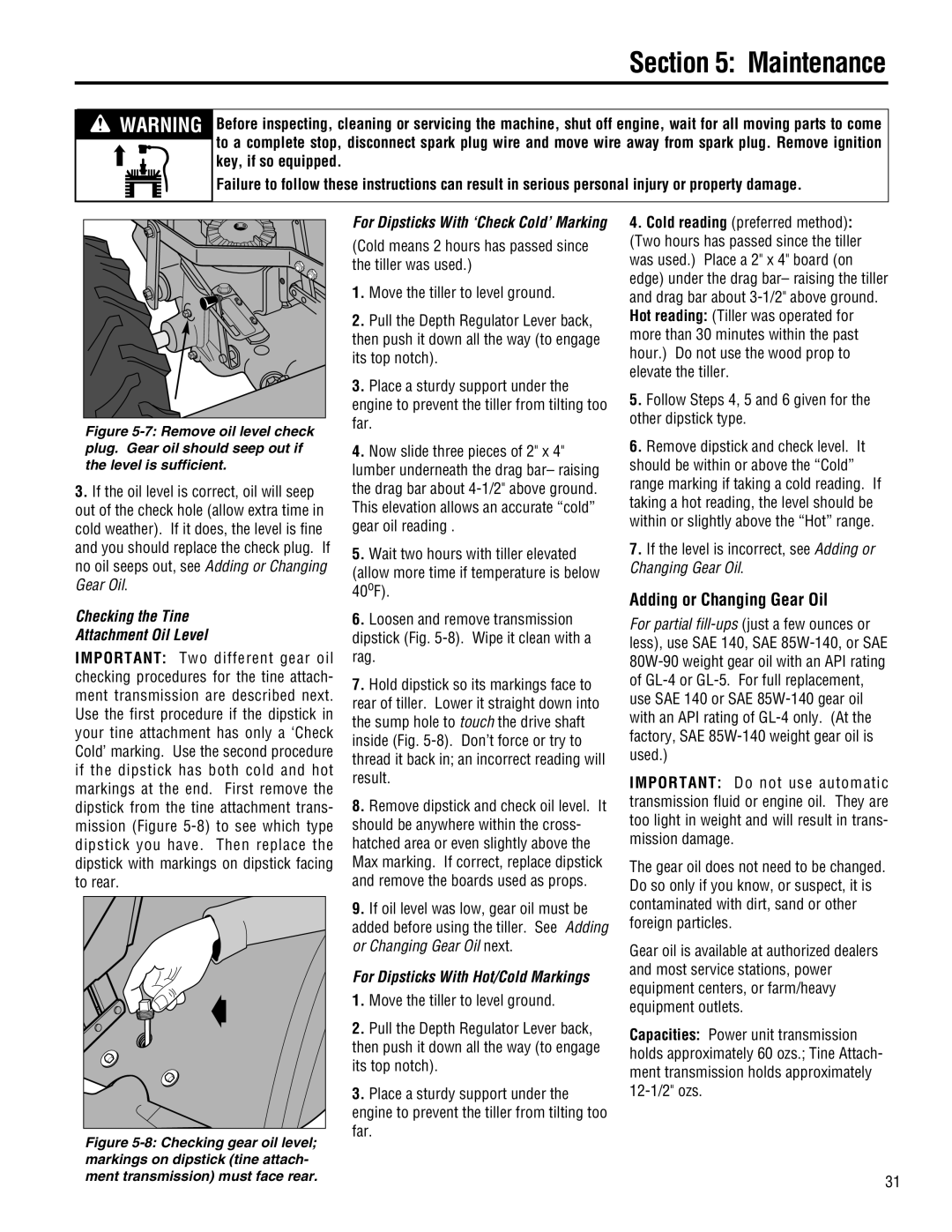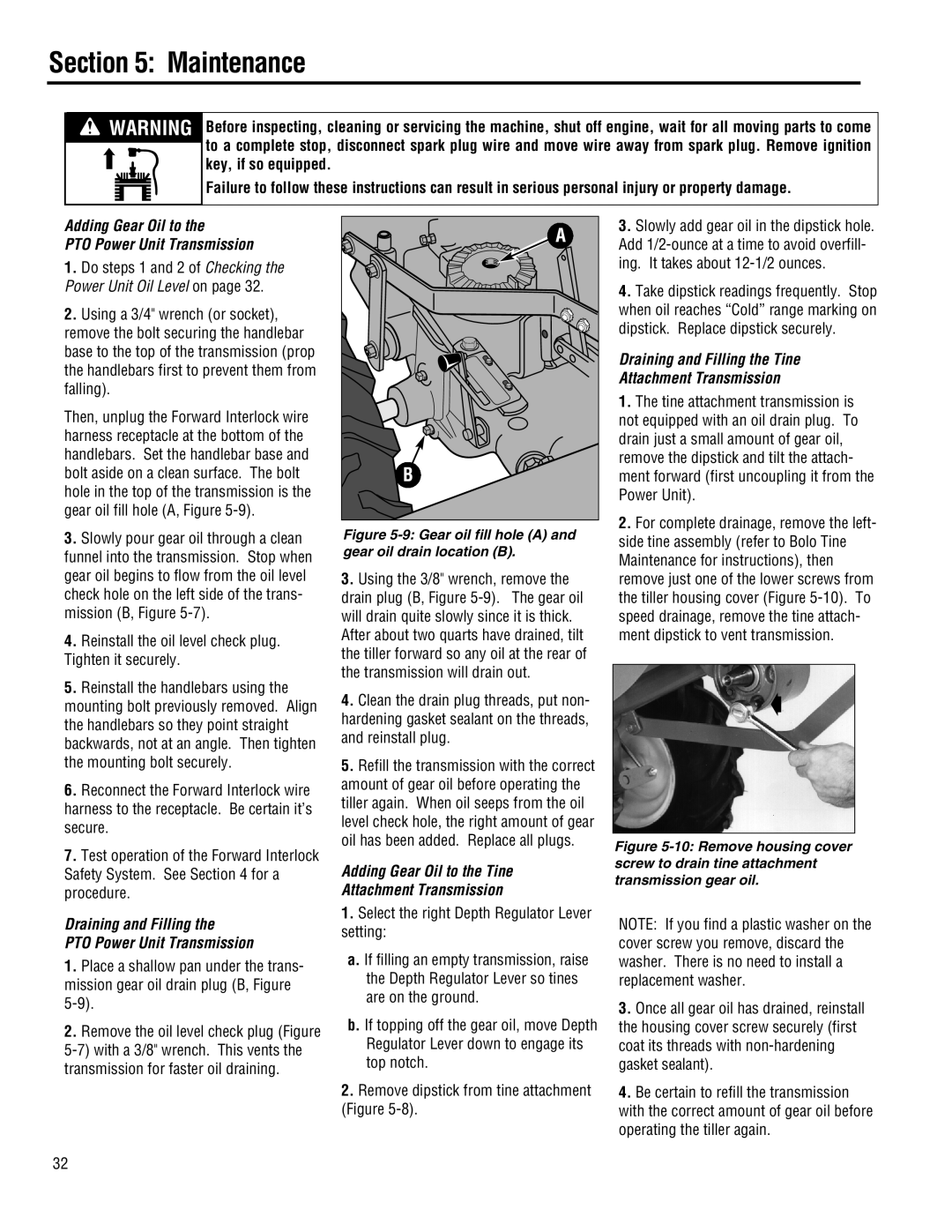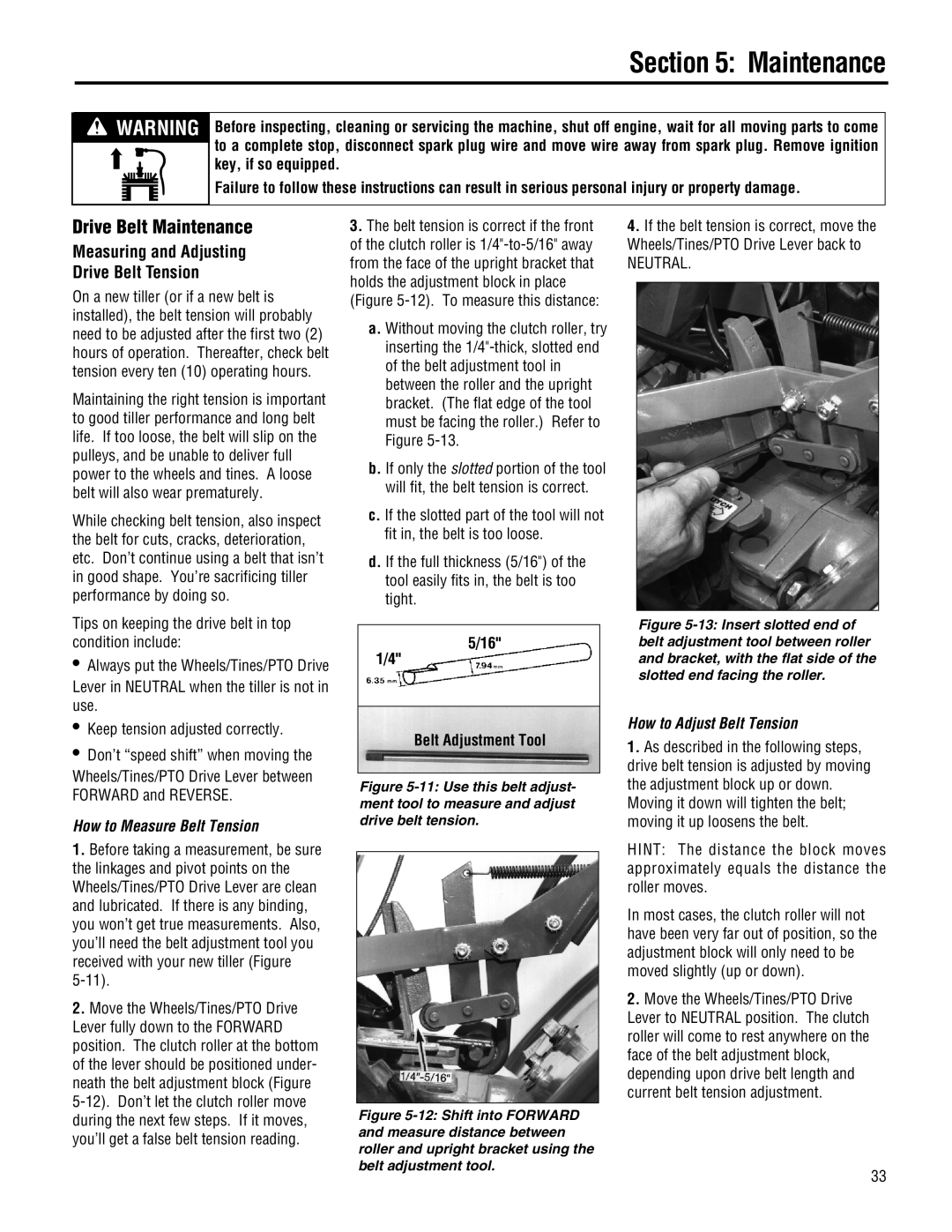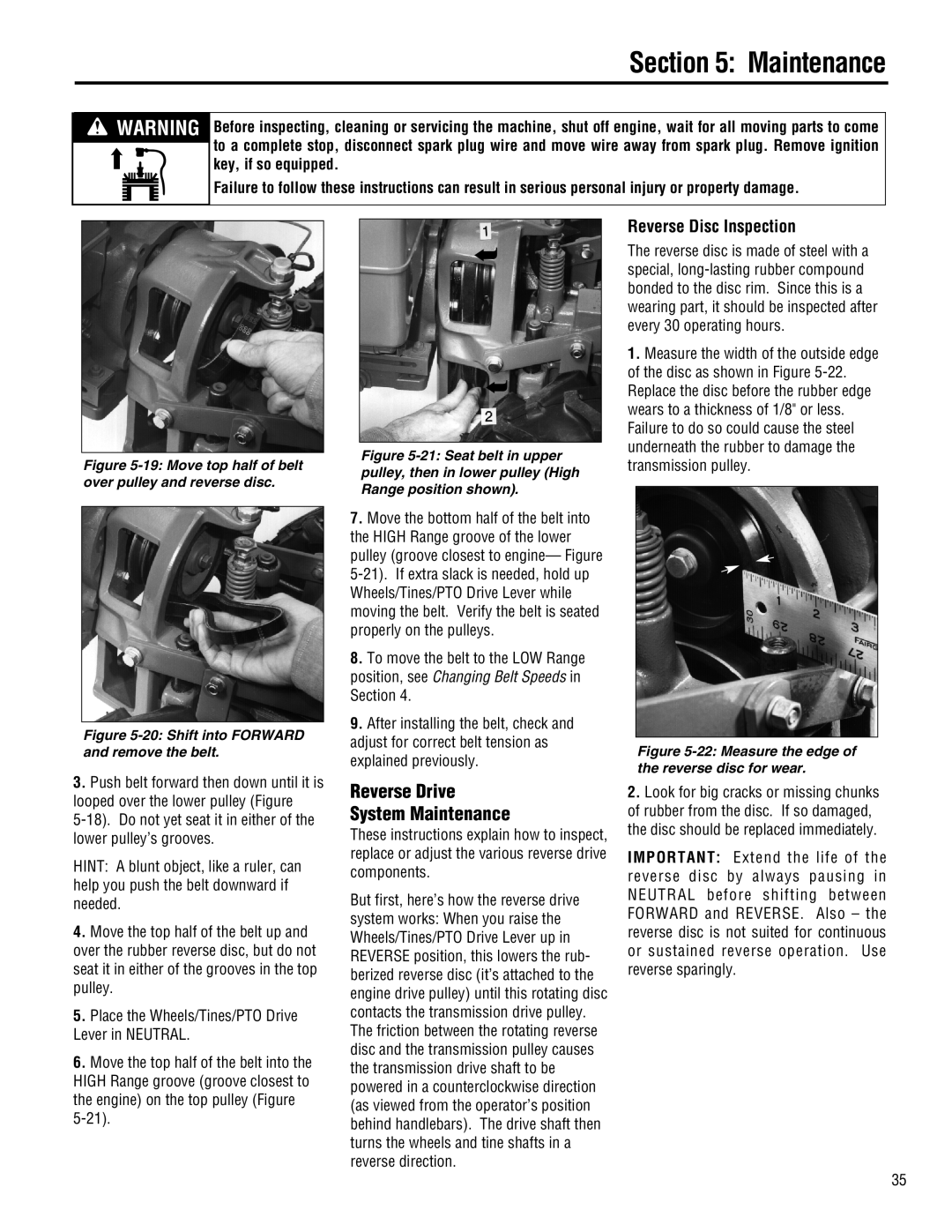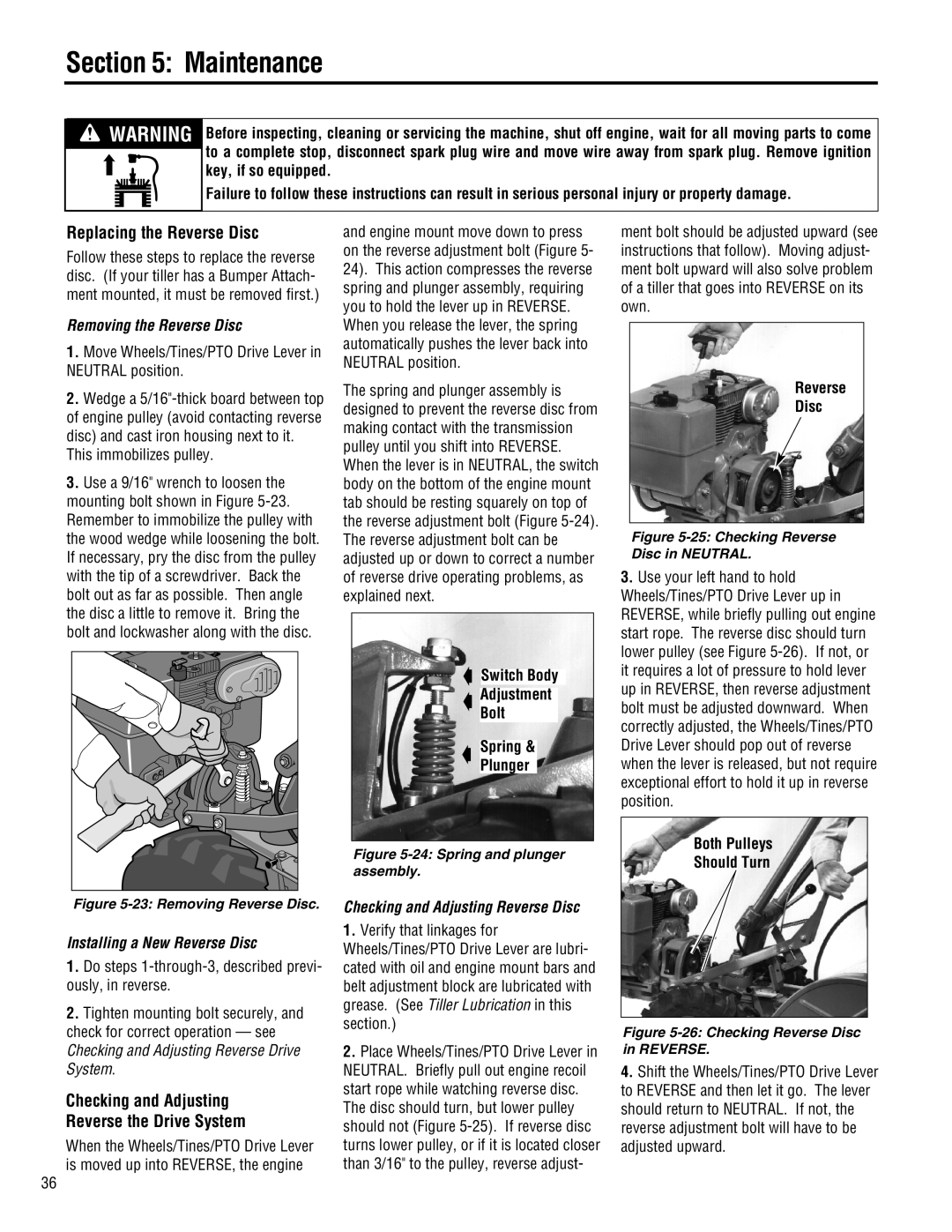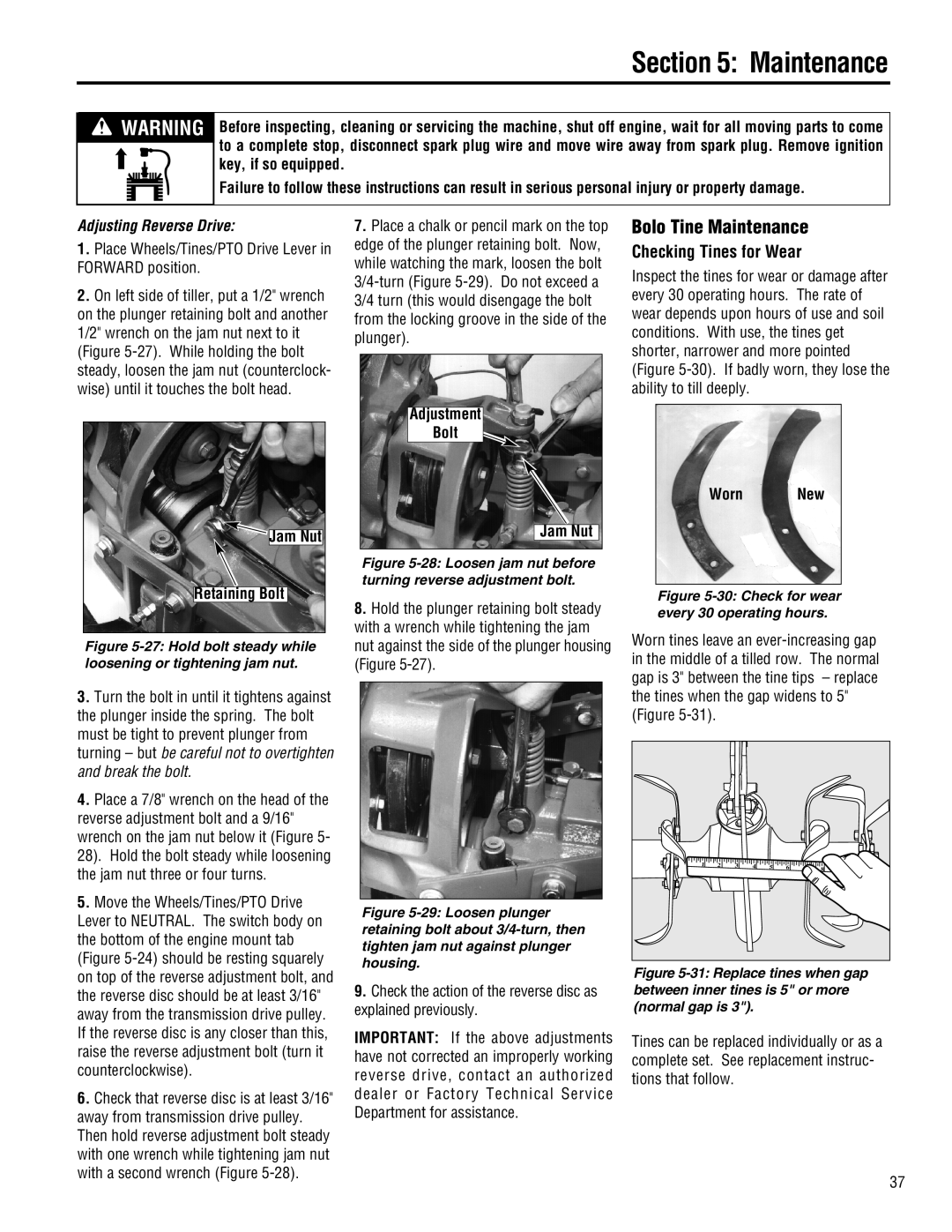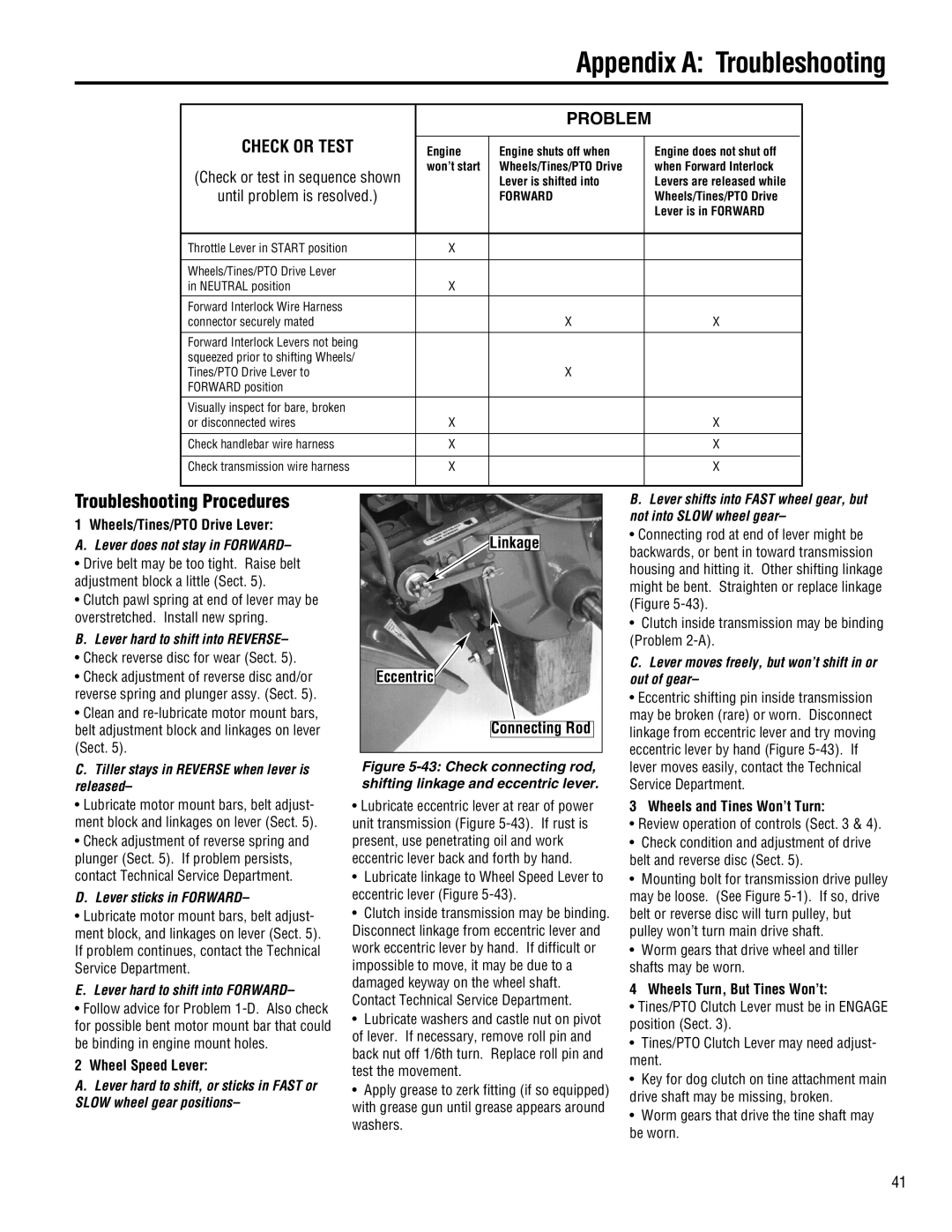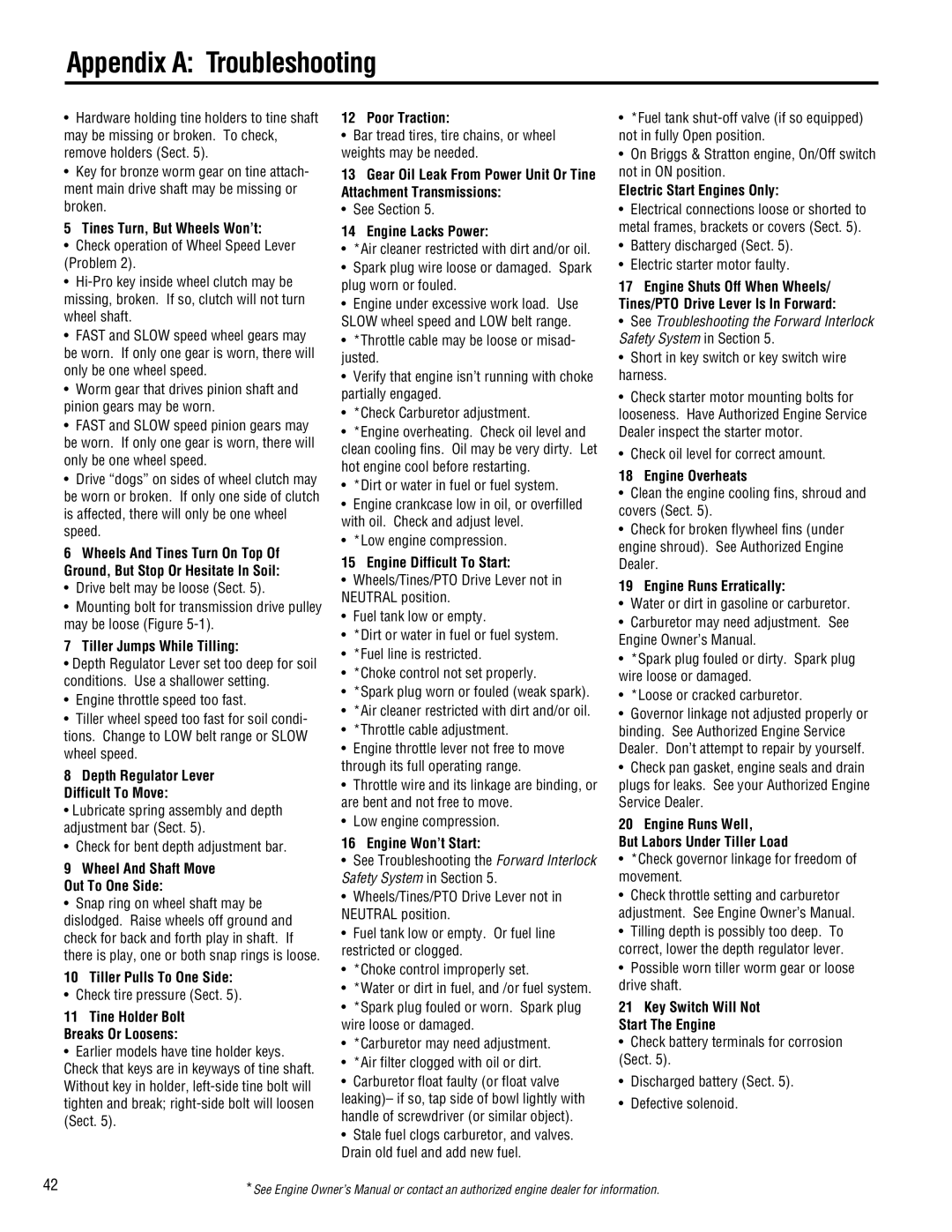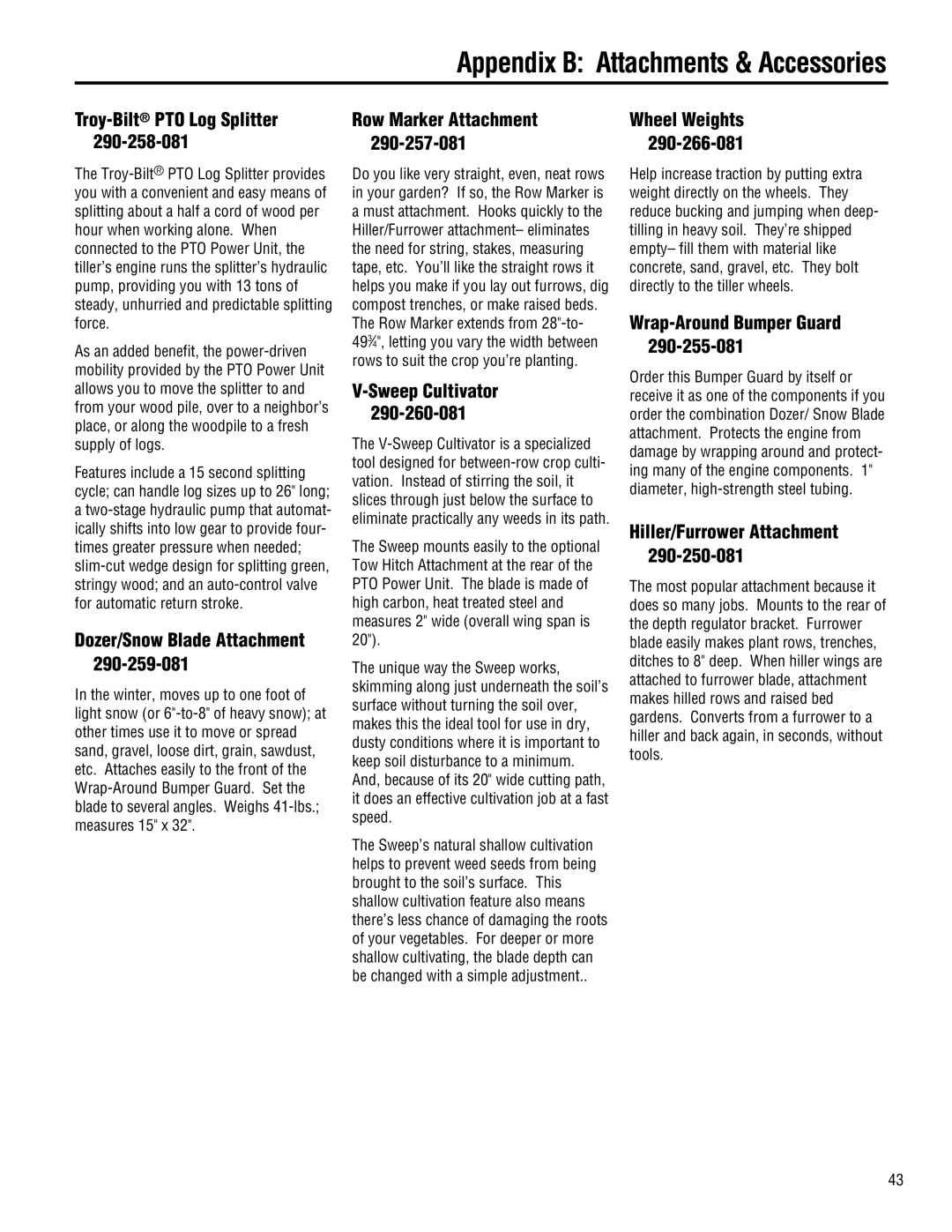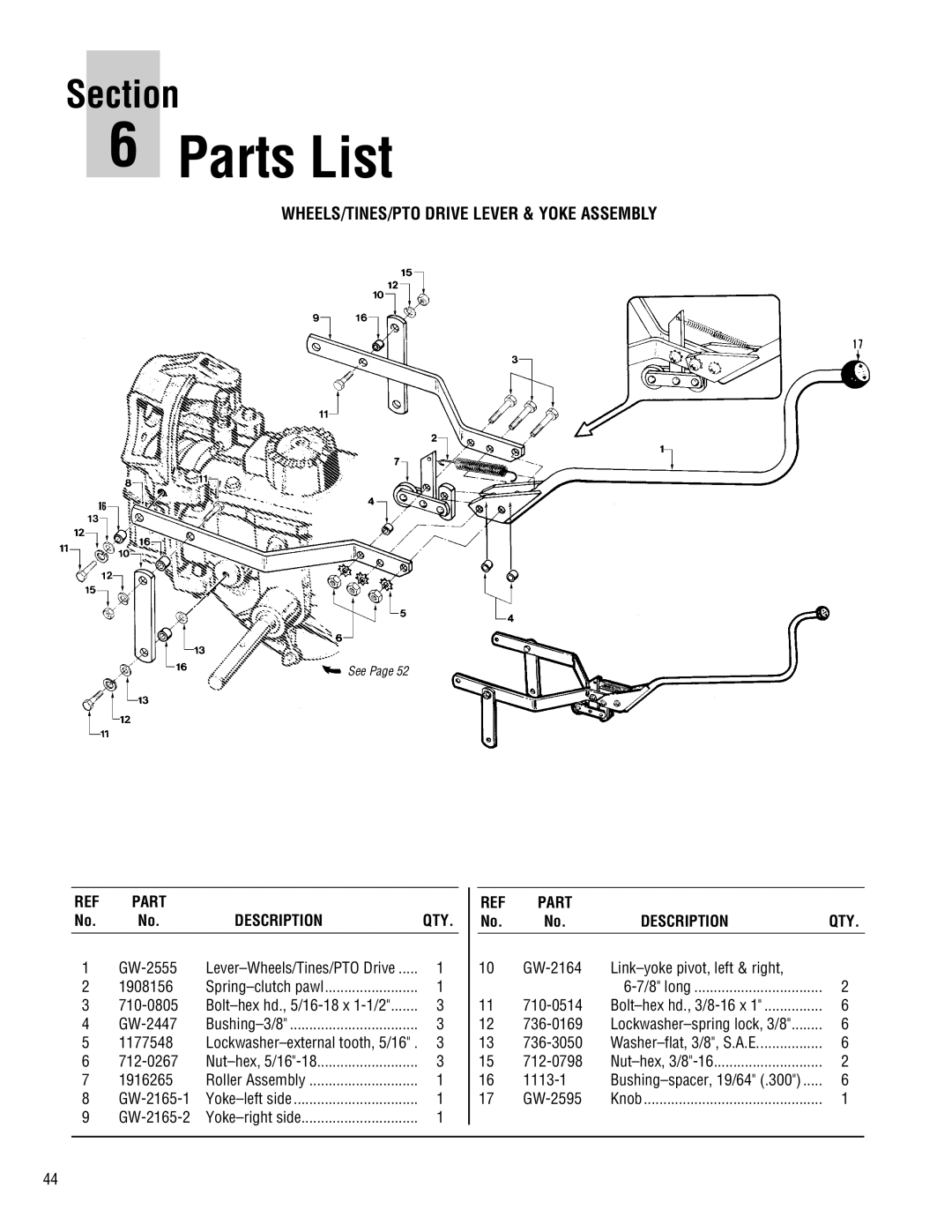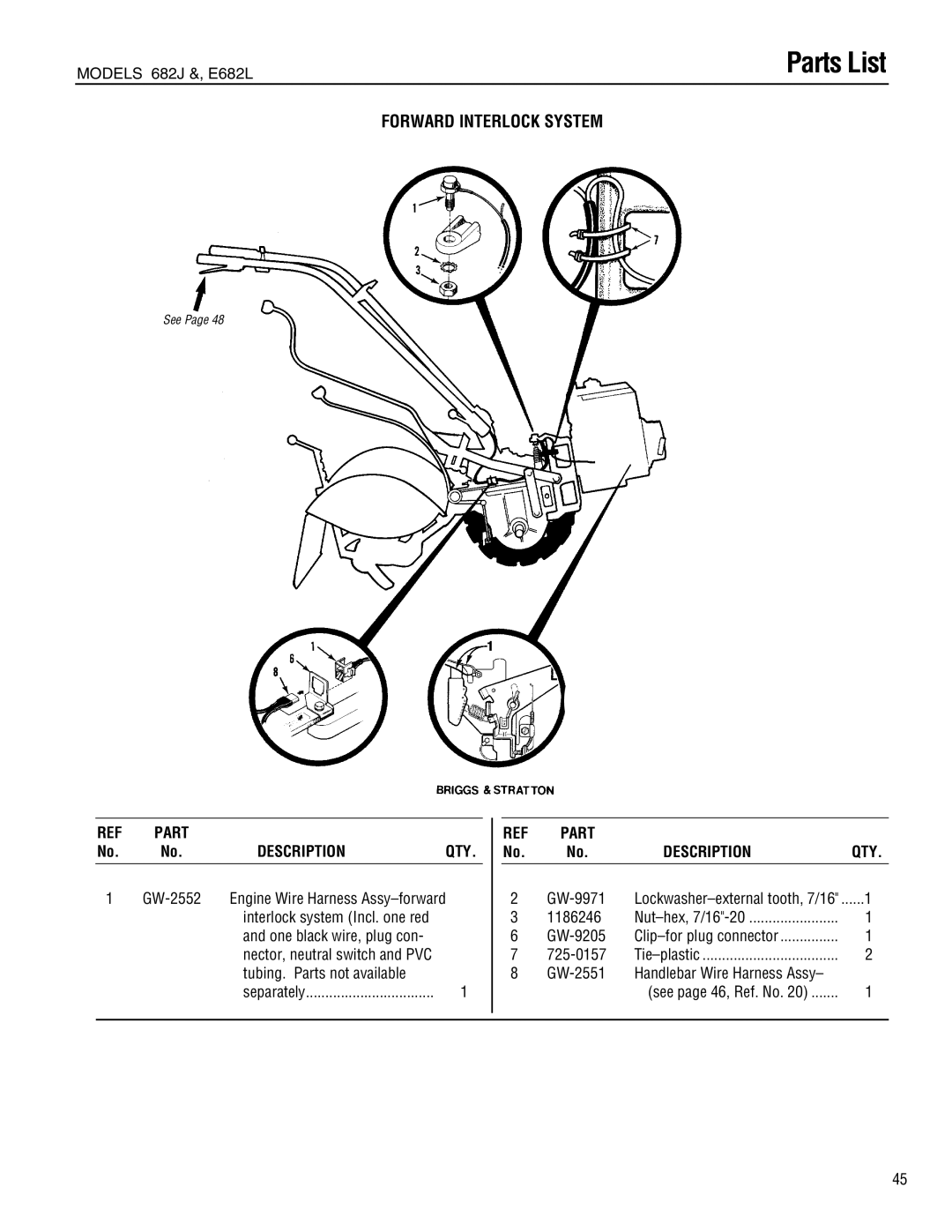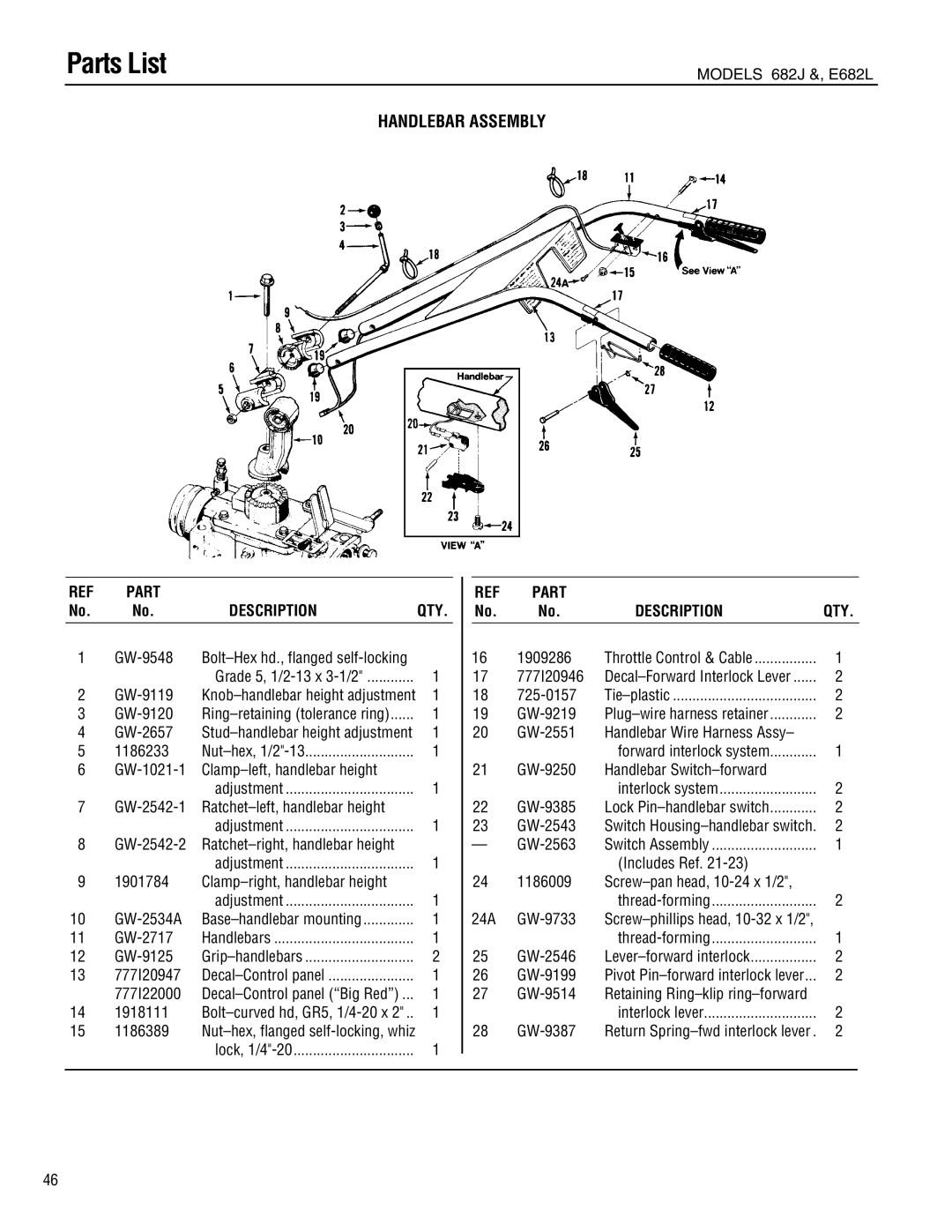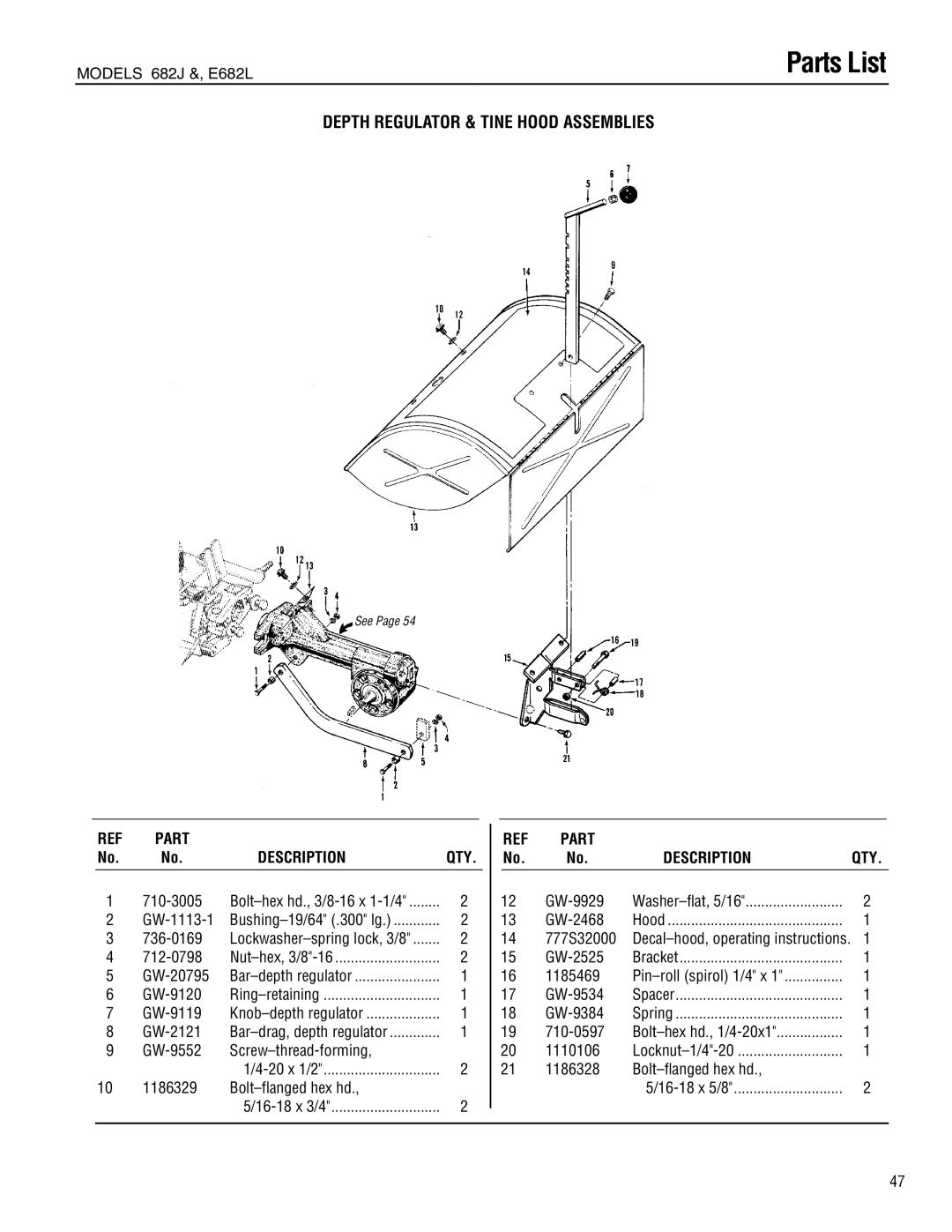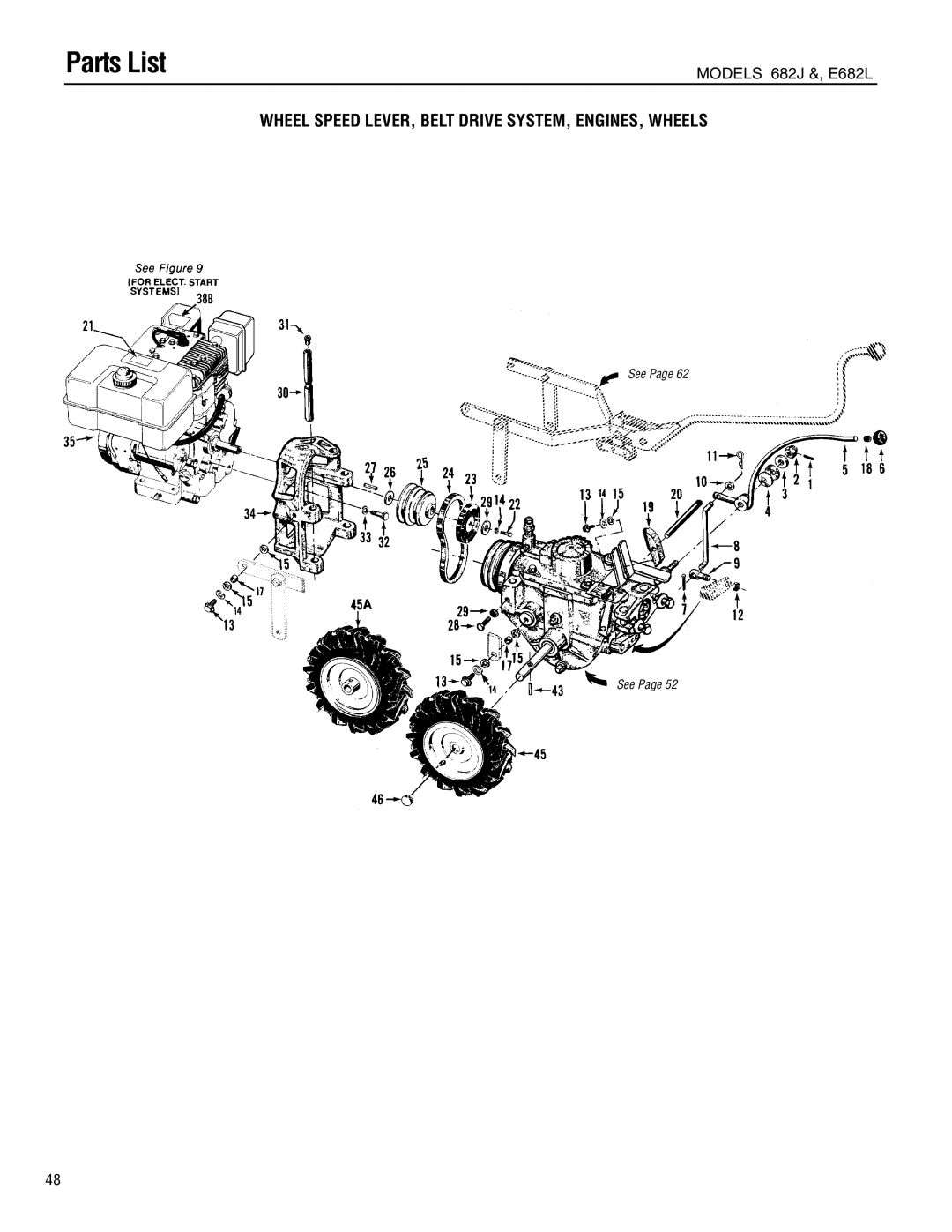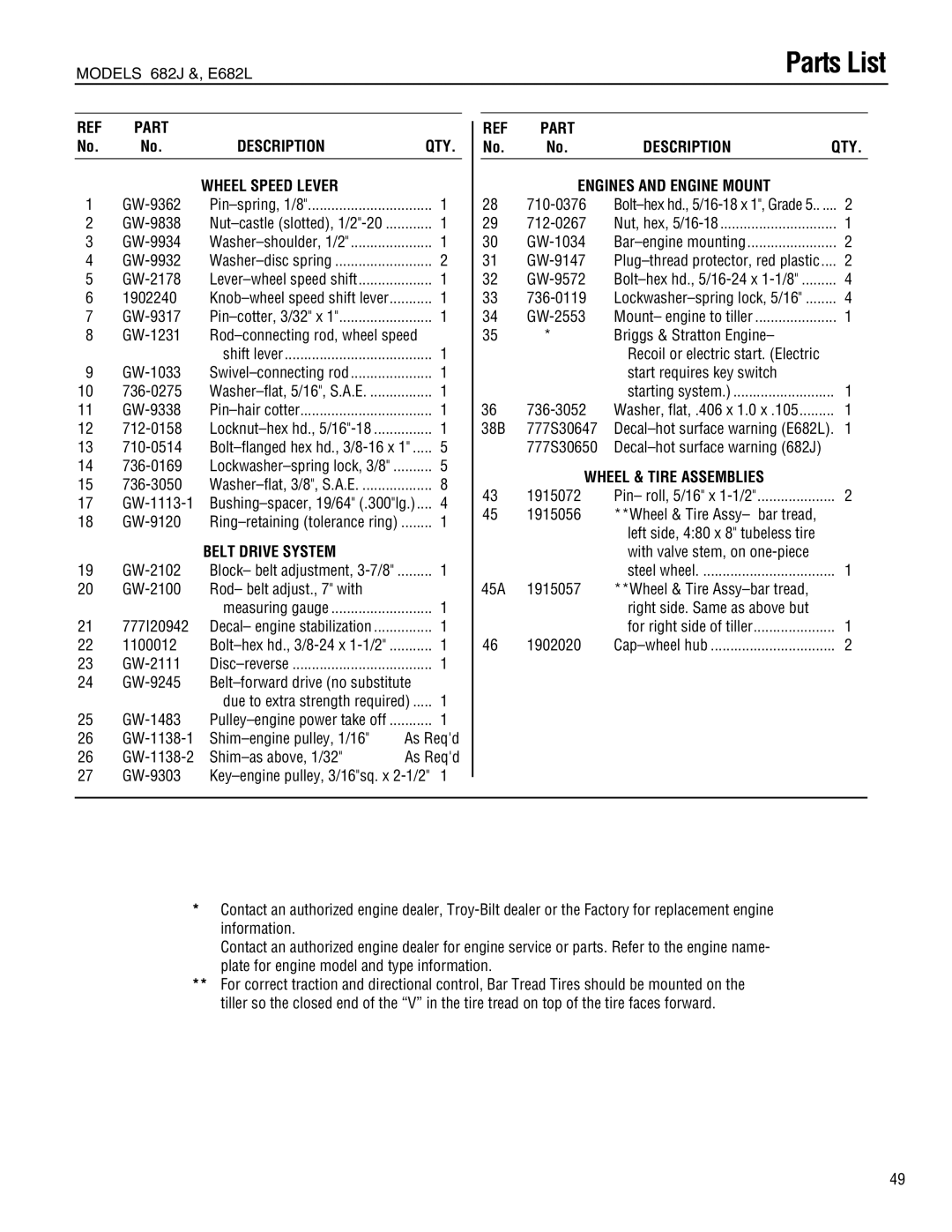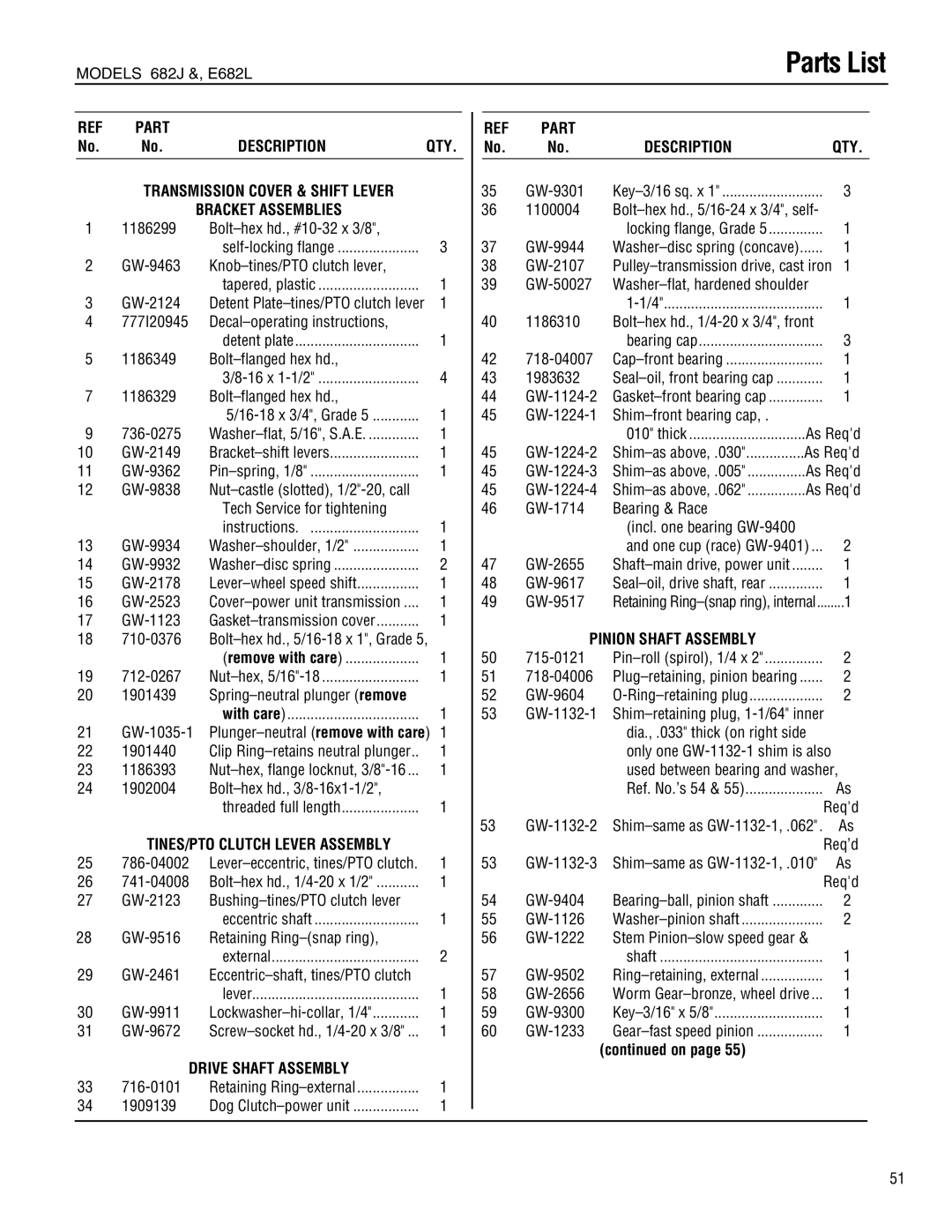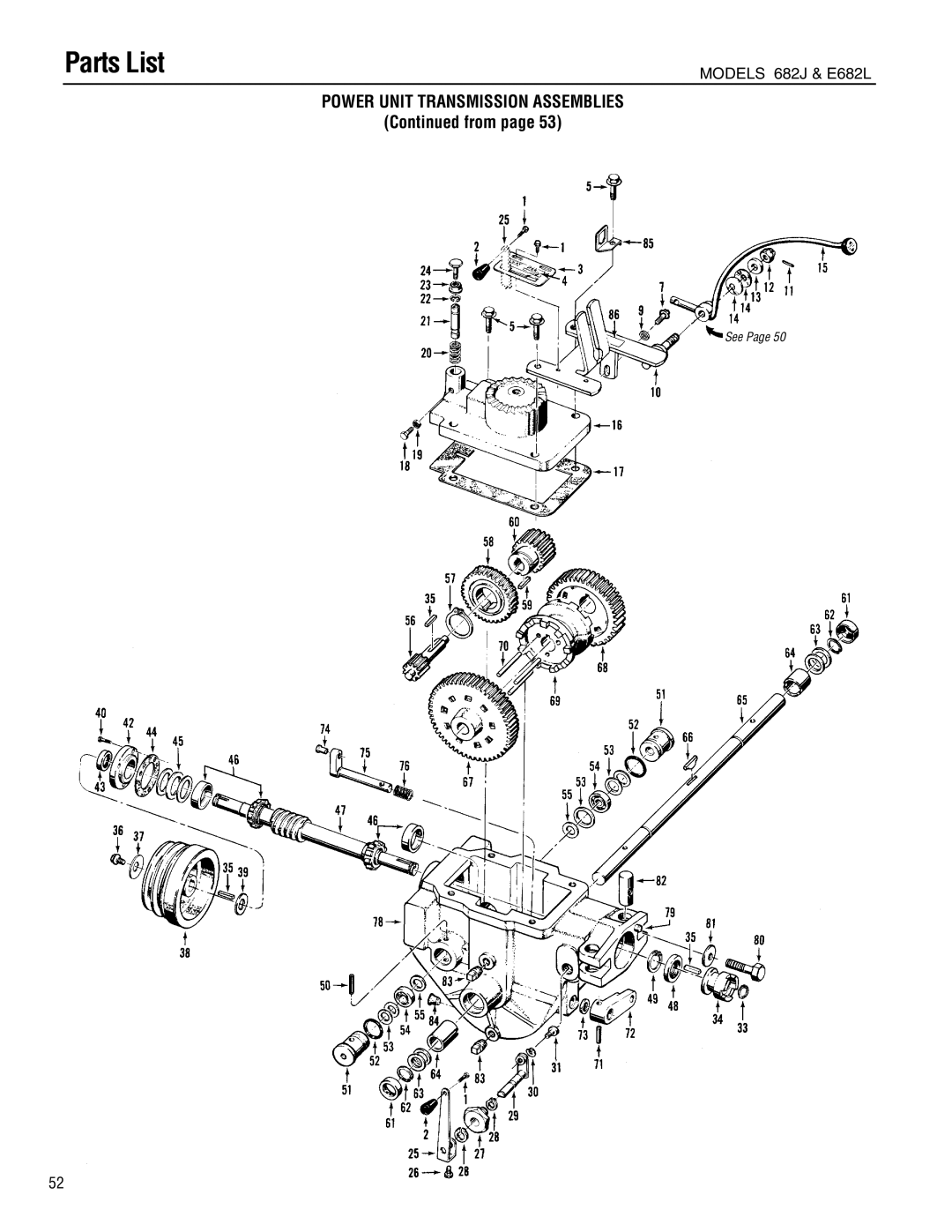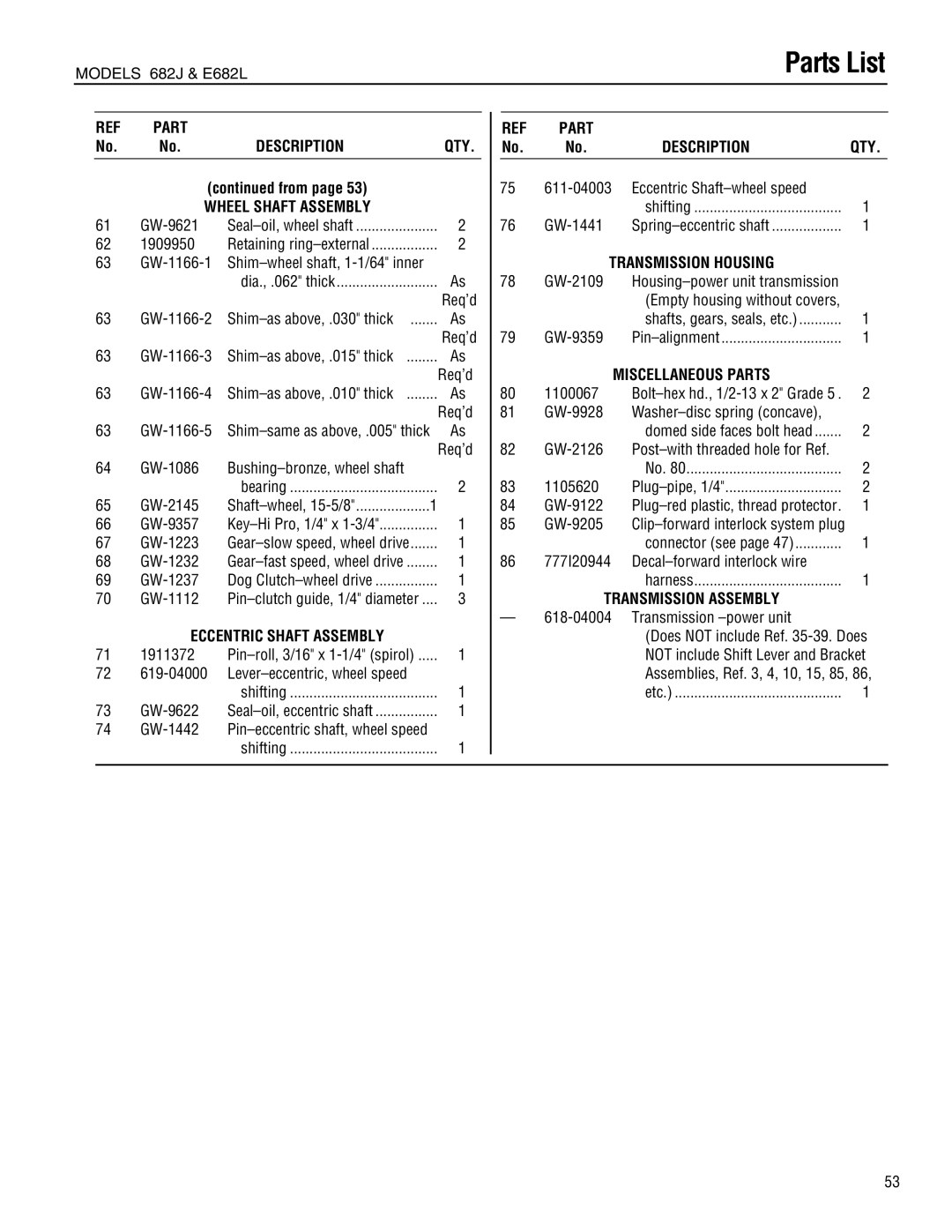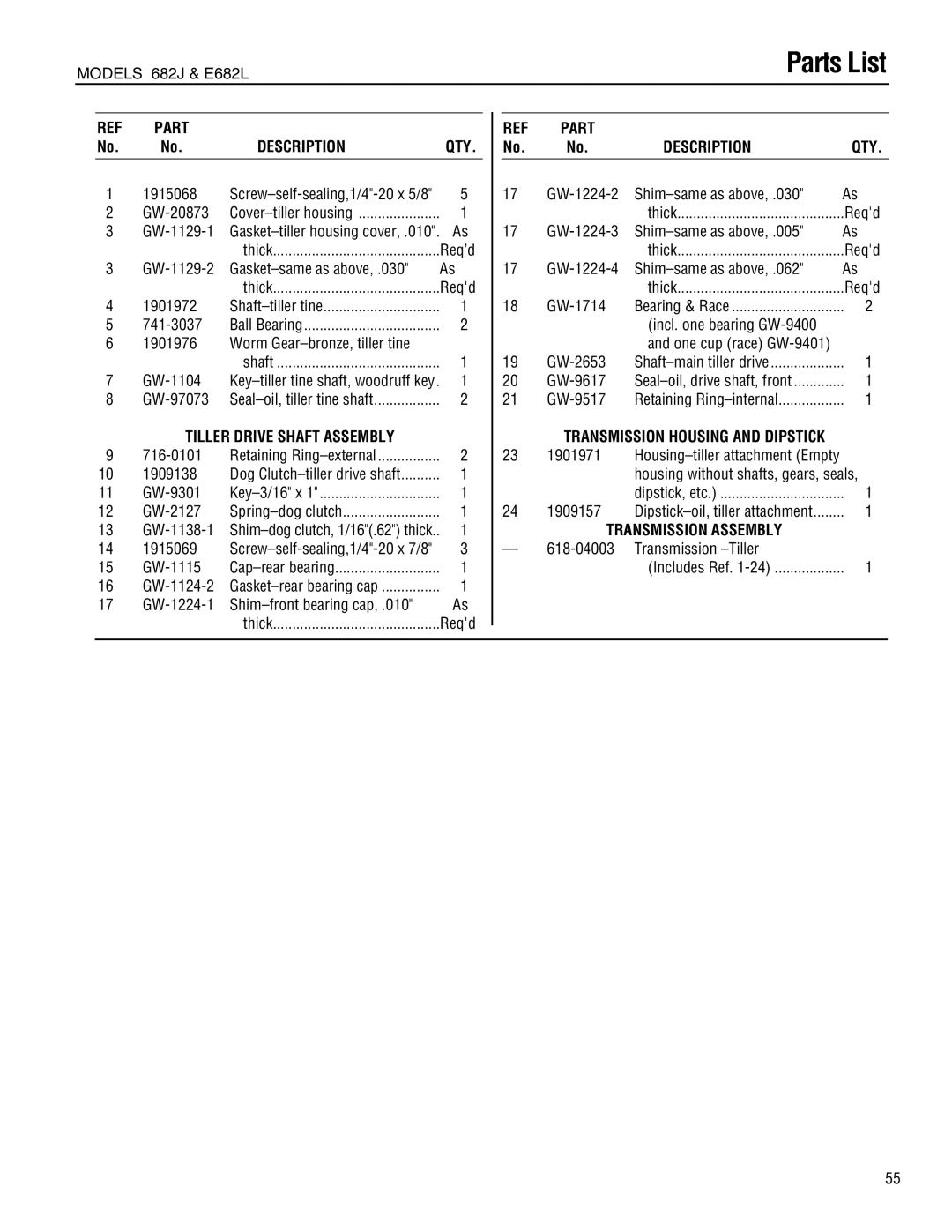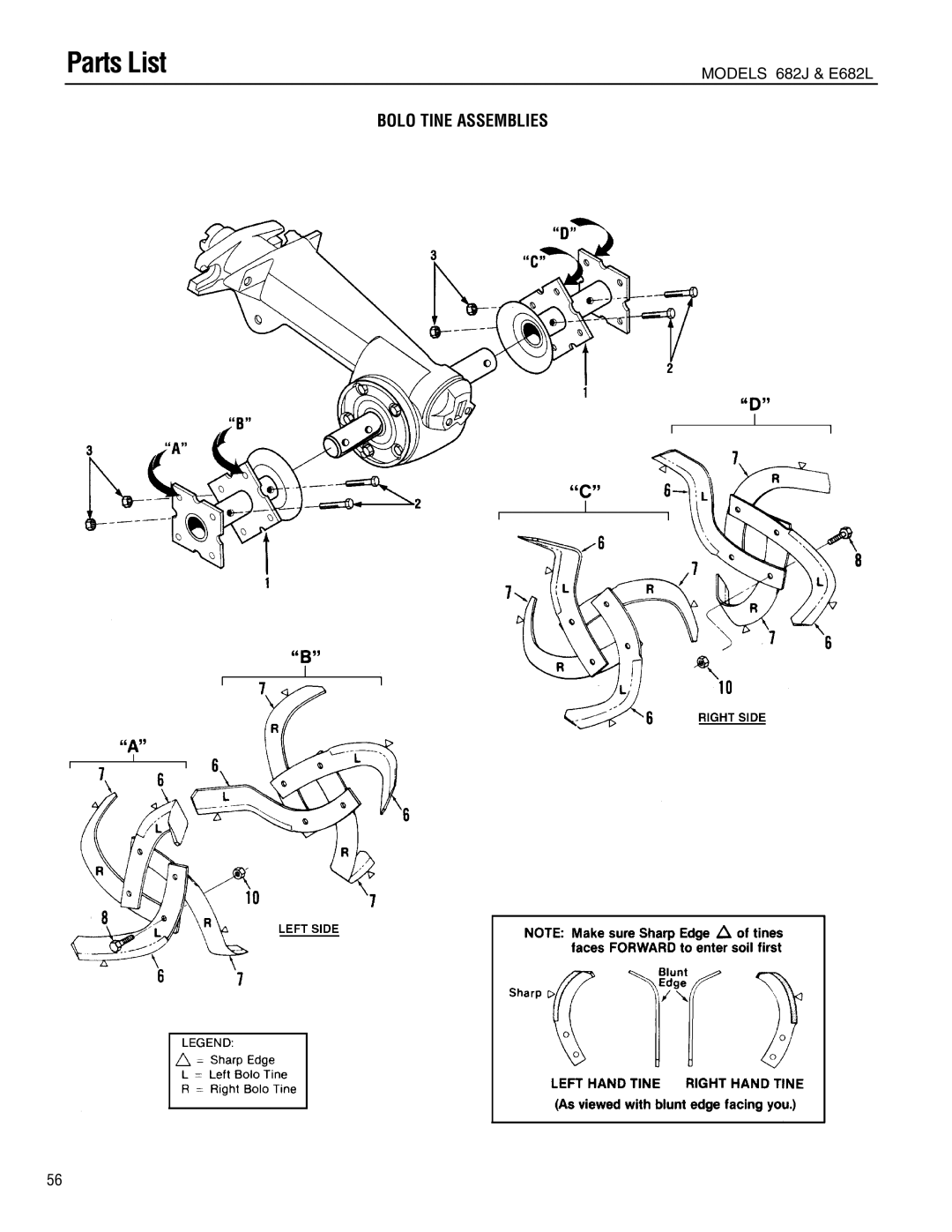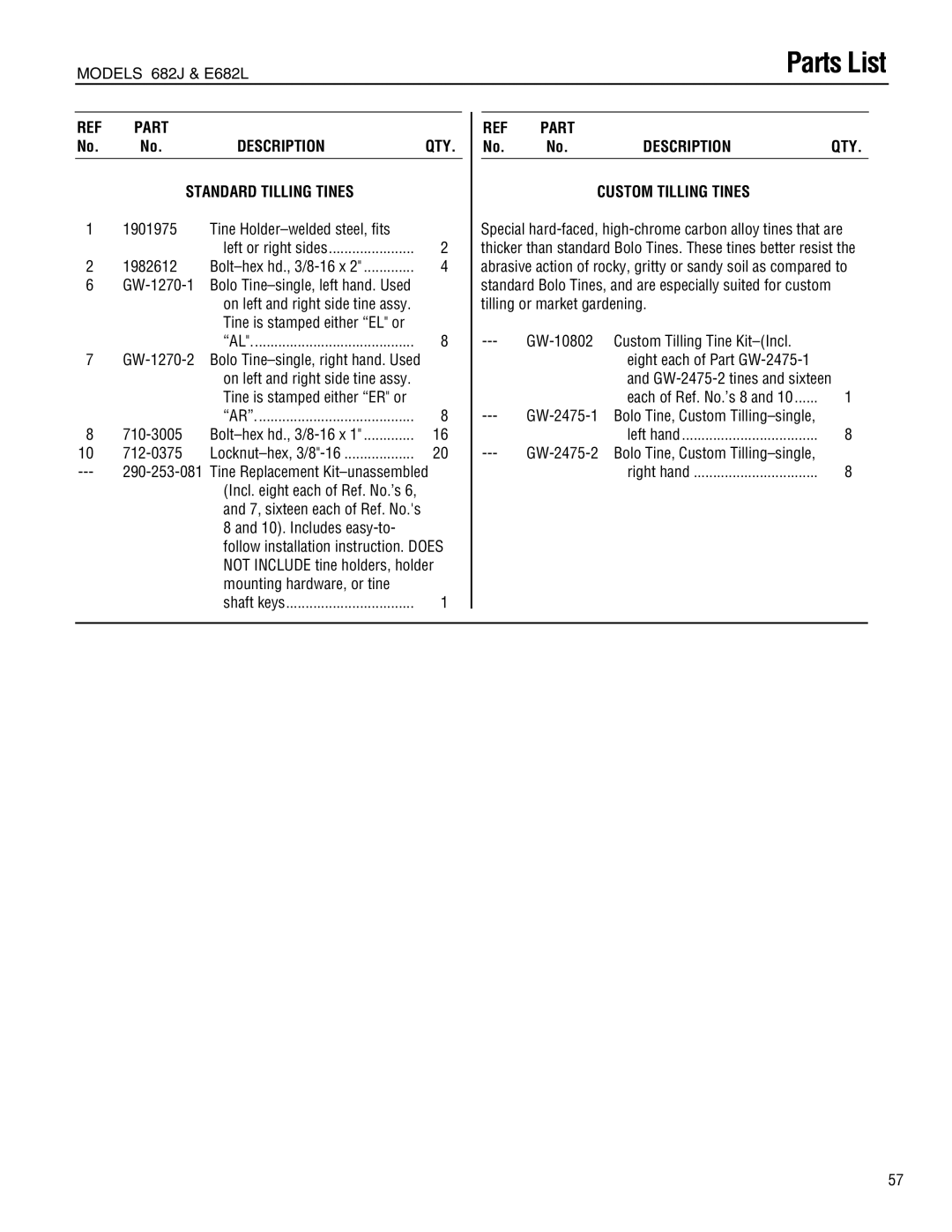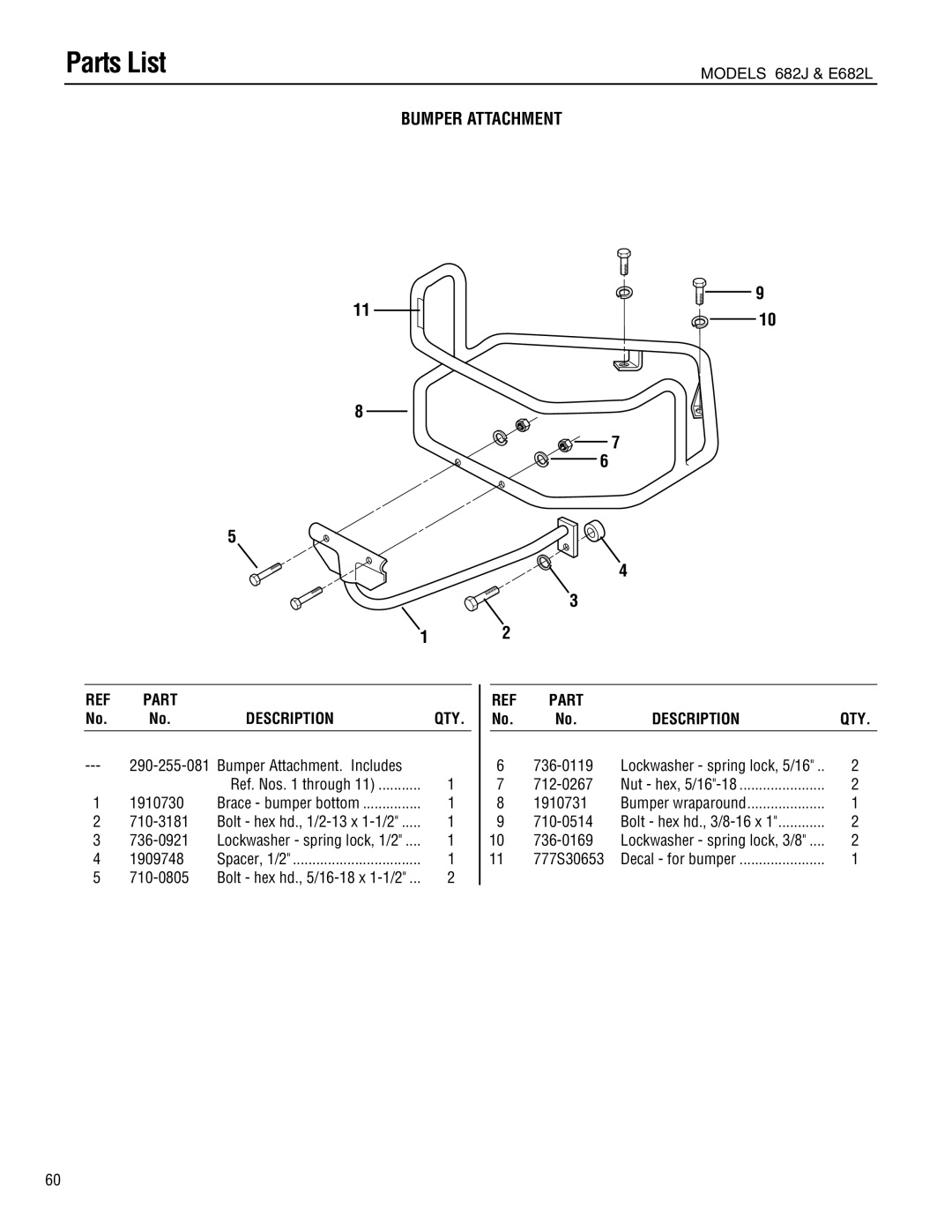Appendix A: Troubleshooting
•Hardware holding tine holders to tine shaft may be missing or broken. To check, remove holders (Sect. 5).
•Key for bronze worm gear on tine attach- ment main drive shaft may be missing or broken.
5 Tines Turn, But Wheels Won’t:
•Check operation of Wheel Speed Lever (Problem 2).
•
missing, broken. If so, clutch will not turn wheel shaft.
•FAST and SLOW speed wheel gears may be worn. If only one gear is worn, there will only be one wheel speed.
•Worm gear that drives pinion shaft and pinion gears may be worn.
•FAST and SLOW speed pinion gears may be worn. If only one gear is worn, there will only be one wheel speed.
•Drive “dogs” on sides of wheel clutch may be worn or broken. If only one side of clutch is affected, there will only be one wheel speed.
6Wheels And Tines Turn On Top Of Ground, But Stop Or Hesitate In Soil:
• Drive belt may be loose (Sect. 5).
• Mounting bolt for transmission drive pulley may be loose (Figure
7Tiller Jumps While Tilling:
•Depth Regulator Lever set too deep for soil conditions. Use a shallower setting.
•Engine throttle speed too fast.
•Tiller wheel speed too fast for soil condi- tions. Change to LOW belt range or SLOW wheel speed.
8Depth Regulator Lever Difficult To Move:
• Lubricate spring assembly and depth adjustment bar (Sect. 5).
• Check for bent depth adjustment bar.
9Wheel And Shaft Move
Out To One Side:
•Snap ring on wheel shaft may be dislodged. Raise wheels off ground and check for back and forth play in shaft. If there is play, one or both snap rings is loose.
10Tiller Pulls To One Side:
• Check tire pressure (Sect. 5).
11Tine Holder Bolt
Breaks Or Loosens:
•Earlier models have tine holder keys. Check that keys are in keyways of tine shaft. Without key in holder,
12 Poor Traction:
•Bar tread tires, tire chains, or wheel weights may be needed.
13Gear Oil Leak From Power Unit Or Tine Attachment Transmissions:
• See Section 5.
14Engine Lacks Power:
•*Air cleaner restricted with dirt and/or oil.
•Spark plug wire loose or damaged. Spark plug worn or fouled.
•Engine under excessive work load. Use SLOW wheel speed and LOW belt range.
•*Throttle cable may be loose or misad- justed.
•Verify that engine isn’t running with choke partially engaged.
•*Check Carburetor adjustment.
•*Engine overheating. Check oil level and
clean cooling fins. Oil may be very dirty. Let hot engine cool before restarting.
•*Dirt or water in fuel or fuel system.
•Engine crankcase low in oil, or overfilled with oil. Check and adjust level.
•*Low engine compression.
15 Engine Difficult To Start:
•Wheels/Tines/PTO Drive Lever not in NEUTRAL position.
•Fuel tank low or empty.
•*Dirt or water in fuel or fuel system.
•*Fuel line is restricted.
•*Choke control not set properly.
•*Spark plug worn or fouled (weak spark).
•*Air cleaner restricted with dirt and/or oil.
•*Throttle cable adjustment.
•Engine throttle lever not free to move through its full operating range.
•Throttle wire and its linkage are binding, or are bent and not free to move.
•Low engine compression.
16 Engine Won’t Start:
•See Troubleshooting the Forward Interlock Safety System in Section 5.
•Wheels/Tines/PTO Drive Lever not in NEUTRAL position.
•Fuel tank low or empty. Or fuel line restricted or clogged.
•*Choke control improperly set.
•*Water or dirt in fuel, and /or fuel system.
•*Spark plug fouled or worn. Spark plug wire loose or damaged.
•*Carburetor may need adjustment.
•*Air filter clogged with oil or dirt.
•Carburetor float faulty (or float valve leaking)– if so, tap side of bowl lightly with handle of screwdriver (or similar object).
•Stale fuel clogs carburetor, and valves. Drain old fuel and add new fuel.
•*Fuel tank
•On Briggs & Stratton engine, On/Off switch not in ON position.
Electric Start Engines Only:
•Electrical connections loose or shorted to metal frames, brackets or covers (Sect. 5).
•Battery discharged (Sect. 5).
•Electric starter motor faulty.
17Engine Shuts Off When Wheels/ Tines/PTO Drive Lever Is In Forward:
• See Troubleshooting the Forward Interlock Safety System in Section 5.
• Short in key switch or key switch wire harness.
•Check starter motor mounting bolts for looseness. Have Authorized Engine Service Dealer inspect the starter motor.
•Check oil level for correct amount.
18 Engine Overheats
•Clean the engine cooling fins, shroud and covers (Sect. 5).
•Check for broken flywheel fins (under engine shroud). See Authorized Engine Dealer.
19 Engine Runs Erratically:
•Water or dirt in gasoline or carburetor.
•Carburetor may need adjustment. See Engine Owner’s Manual.
•*Spark plug fouled or dirty. Spark plug wire loose or damaged.
•*Loose or cracked carburetor.
•Governor linkage not adjusted properly or binding. See Authorized Engine Service Dealer. Don’t attempt to repair by yourself.
•Check pan gasket, engine seals and drain plugs for leaks. See your Authorized Engine Service Dealer.
20 Engine Runs Well,
But Labors Under Tiller Load
•*Check governor linkage for freedom of movement.
•Check throttle setting and carburetor adjustment. See Engine Owner’s Manual.
•Tilling depth is possibly too deep. To correct, lower the depth regulator lever.
•Possible worn tiller worm gear or loose drive shaft.
21Key Switch Will Not Start The Engine
• Check battery terminals for corrosion (Sect. 5).
•Discharged battery (Sect. 5).
•Defective solenoid.
42 | *See Engine Owner’s Manual or contact an authorized engine dealer for information. |
